Productivity News
Lenny's Newsletter
140

Image Credit: Lenny's Newsletter
Notion’s lost years, its near collapse during Covid, staying small to move fast, the joy and suffering of building horizontal, more | Ivan Zhao (CEO and co-founder)
- Ivan Zhao, the CEO and co-founder of Notion, shares the company's untold story, including facing near collapse during Covid and finding product-market fit after 'lost years.'
- Notion prioritized systems over headcount, keeping a small, focused team even as they scaled.
- Lessons include the importance of building a great product above all else and starting over if necessary.
- Notion's community-led growth tactics and Ivan's journey from a small town in China are highlighted.
- The importance of building for users, staying true to the vision but flexible in tactics, and balancing craft and values in product development are discussed.
- Notion's unique approach of delaying monetization, staying lean, and focusing on community trust led to success.
- Key takeaways include building horizontal products with a clear use case, hiding broader visions within familiar concepts, and balancing foundational capabilities with packaged solutions.
- Ivan shares insights on product-market fit, staying lean, creating office culture, and the value of craft and values in business building.
- The podcast also covers leadership, challenges faced by Notion, the philosophy of tools and human potential, and more.
- Ivan Zhao's advice for entrepreneurs includes being willing to start over, building for users' true needs, and staying lean for faster decision-making.
- Notion's journey from a failed first version to a successful product emphasizes the importance of solving real user problems and building trust within the community.
Read Full Article
7 Likes
The Beautiful Mess
317

Image Credit: The Beautiful Mess
TBM Context, Possibility, Intent, and Action
- The article discusses principles for designing rituals, artifacts, frameworks, and cycles for teams or organizations to go beyond standard language like strategy and execution.
- It presents a simple example of an 'operating system' involving setting weekly intentions, engaging with goals, tasks, and reflections.
- The four core building blocks of the operating system are described as Possibility, Intent, Action, and Context, with Control and Integration tying them together.
- The article explores the nuances of intent, categorizing it by short-term vs. long-term, procedural vs. outcome-oriented, concrete vs. abstract, and linear vs. high-leverage.
- It emphasizes the importance of finding the right mix of intent signifiers in high-performing companies to achieve coherence without excessive process overhead.
- Challenges in strategy, planning, and execution are discussed, highlighting issues like the disconnect between strategy and execution, and the lack of alignment in planning.
- The article then delves into the impact of growth and scale on context, intent alignment, possibility exploration, action execution, and control and integration mechanisms.
- It addresses the importance of maintaining context sharing and alignment, avoiding overwhelming people with information, and balancing present needs with future growth.
- The article concludes by stressing the need for companies to focus on connecting people with critical context dots, aligning intent across teams, and balancing short-term execution with long-term strategic objectives.
- By understanding the building blocks of a functioning system including Possibility, Intent, Action, Context, and Control and Integration, organizations can better address gaps and improve coherence.
- The article provides insights into how different intent types can guide decision-making and how companies of varying sizes can adapt their operating systems to scale effectively.
Read Full Article
18 Likes
Minis
79.1k

Image Credit: Minis
2-time CEO shares the two red flags he sees in job interviews
- David Royce, two-time CEO and co-founder of Aptive Environmental, says two signs immediately raise concerns during interviews.
- First, a history of short-term jobs — if every role lasts just 6 to 12 months, it suggests the candidate may get bored quickly or struggle to work well with others, making them a risky long-term hire.
- Second, constant negativity about past employers is a major red flag. Royce believes overly critical candidates can drag down workplace morale. Instead, he looks for people who stay positive, focus on solutions, and bring energy that motivates teams and drives the company forward.
Read Full Article
168 Likes
ADPList’s Newsletter
286
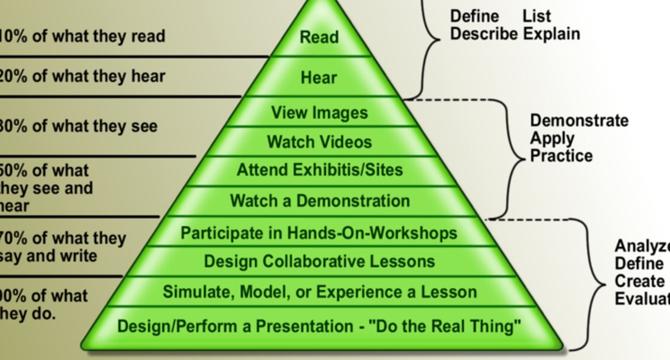
Image Credit: ADPList’s Newsletter
How to facilitate your first workshop (step-by-step guide)
- Design workshops are essential for designers to bring together diverse perspectives, foster creativity, and make progress on projects.
- Blair Fraser, a design leader, shares insights on planning and running impactful design workshops.
- Active learning experiences are more effective for retaining information over time.
- The article outlines why design workshops matter, how to design workshops, run them effectively, and handle unexpected challenges.
- Key tips include starting with a clear goal, time-boxing activities, incorporating breaks strategically, and preparing attendees in advance.
- The importance of designing the overall workshop experience, not just the agenda, is emphasized.
- Suggestions for enhancing workshops include creating a warm atmosphere, personalized interactions, monitoring energy levels, and incorporating fun elements.
- Facilitation tips include setting expectations, establishing ground rules, using voting techniques, and managing challenges such as strong personalities or time constraints.
- Post-workshop steps include summarizing the session, sharing outputs, assigning ownership, asking for feedback, and building facilitation skills beyond workshops.
- Overall, the article encourages embracing the imperfection of workshops, staying adaptable, and focusing on creating valuable, engaging sessions.
Read Full Article
16 Likes
Lenny's Newsletter
346
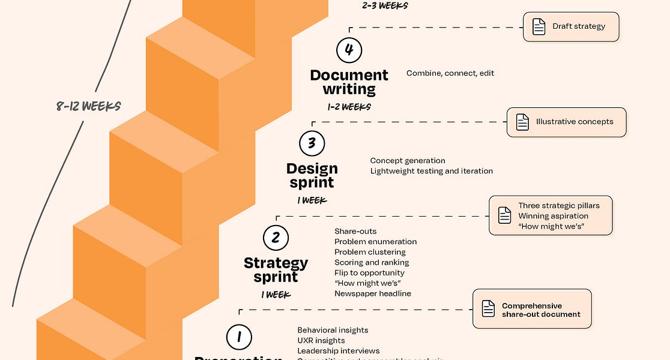
Image Credit: Lenny's Newsletter
Strategy Blocks: An operator’s guide to product strategy
- The article 'Strategy Blocks: An operator’s guide to product strategy' presents a framework called Strategy Blocks for crafting a product and company strategy effectively.
- The strategy framework, developed by Chandra Janakiraman, provides step-by-step instructions for creating a strategy, incorporating insights from various strategy experts and thought leaders like Michael Porter.
- The framework consists of two main parts: crafting a 2-year strategy (small 's' strategy) and crafting a 3/5/10-year strategy (big 'S' strategy), each with detailed guidance and timelines.
- The 2-year strategy process involves preparation, strategy sprint, design sprint, document writing, and roll-out, aiming to align team members, leadership, and stakeholders to drive action and execution.
- The 3/5/10-year strategy focuses on creating an aspirational and exciting long-term vision for the company, involving preparation, defining distinct futures, creating prototypes, convergence, and roadmap/testing.
- The strategy framework emphasizes the importance of developing strategic pillars, clarity on focus areas, and actionable insights to guide decision-making and resource allocation.
- Key steps in the preparation phase include forming a strategy working group, conducting behavioral and user research, leadership interviews, competitive analysis, and synthesizing insights into a share-out deck.
- The strategy sprint component involves generating problem statements, clustering them into themes, scoring opportunities, defining strategic pillars, creating 'how might we’s,' and crafting a winning aspiration.
- The design sprint focuses on producing illustrative concepts to bring the strategic pillars to life, while the document-writing phase brings together user insights, competitive analysis, and strategic elements into a coherent strategy document.
- Overall, the Strategy Blocks framework seeks to enhance alignment, transparency, and strategic clarity within teams and leadership, fostering innovation, growth, and long-term success for companies.
Read Full Article
20 Likes
ADPList’s Newsletter
351
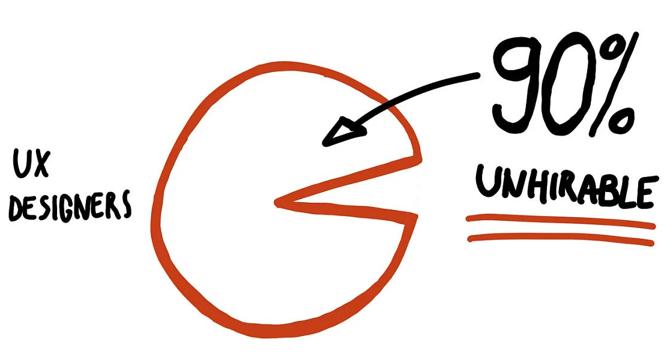
Image Credit: ADPList’s Newsletter
90% of designers are unhirable?
- The article discusses why 90% of designers struggle to land jobs at top companies due to the prevalent linear design process in portfolios.
- Most designers present cookie-cutter case studies that follow a predictable path, failing to showcase creativity or problem-solving skills.
- Linear processes in portfolios make the design work seem too perfect and lack authenticity, affecting credibility.
- Design-mature companies seek designers who can creatively solve problems, not just follow a standardized process.
- A shallow portfolio with generic case studies may secure a job in UX but limit growth opportunities in companies that value innovation.
- The discrepancy between ideal process teachings and real-world design practice results in many designers presenting linear, unrealistic case studies.
- Approximately 90% of designers may be deemed unhirable by companies looking for creative problem solvers rather than process followers.
- The design process is often non-linear and messy, requiring adaptation to unexpected challenges and continuous learning.
- Designers are advised to balance assertiveness with a learning mindset, moving away from rigid processes and embracing a more adaptive approach.
- Early-career designers are encouraged to focus on practical problem-solving and continuous improvement rather than fixating on idealized design processes.
Read Full Article
20 Likes
The Growth Catalyst
204
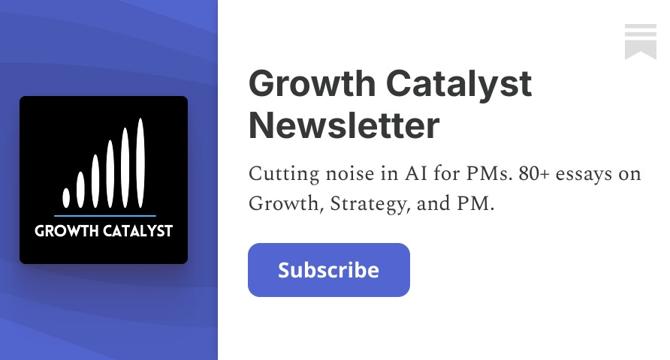
Image Credit: The Growth Catalyst
A Brief Guide to Knowledge and Tools That AI PMs Should Master
- The role of AI Product Manager has evolved with the rise of Large Language Models (LLMs) in the AI landscape.
- AI Product Managers need a unique set of skills beyond traditional PM roles, including technical proficiency and AI/ML knowledge.
- Discovery and prioritization of AI use cases require assessing data availability, ROI calculation, and implementation details.
- AI product design involves handling challenges like generative AI products potentially providing misinformation.
- AI engineering involves understanding model selection, architecture, and cost implications, requiring active involvement from PMs.
- AI Agents can work independently with minimal human supervision, and PMs need to understand building processes using tools like AutoGPT.
- Evaluation and improvement of AI products involve designing comprehensive evaluation frameworks and managing dataset quality.
- Ensuring AI safety and ethical considerations is crucial in the evaluation process, using tools like AI Fairness Checklist.
- Pricing and positioning AI products require understanding unique value propositions and crafting pricing strategies based on consumer willingness to pay.
- Product growth and strategy are essential for long-term success of AI products, utilizing special features like novelty and community engagement.
Read Full Article
11 Likes
Lenny's Newsletter
263
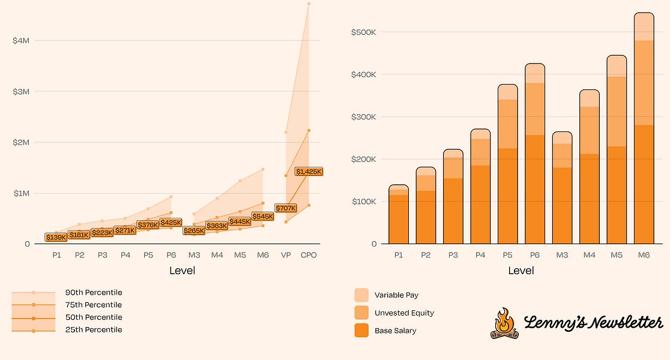
Image Credit: Lenny's Newsletter
How much product managers make in the U.S., Europe, and Canada
- Exclusive salary benchmarks for product managers in the U.S., Europe, and Canada are provided in the article.
- Data from over 23,000 product managers globally is analyzed for compensation insights.
- In the U.S., the median starting base salary for a PM at a public company is $112,000, while at a private company it is $96,000.
- Senior IC PMs can earn up to $1,000,000 in total compensation, with CPOs hitting $1,425,000.
- Moving from a Tier 3 U.S. city to a Tier 1 city can increase salary by 20%.
- Salary disparities between public and private companies exist, with base salaries being lower at private companies.
- In the U.K., PMs earn 65% of what a U.S. PM earns, while the average European PM makes less than 50% of a U.S. PM's salary.
- Key takeaways include salary differences based on company type, location, and level within the organization.
- Levels of seniority are mapped to titles such as Entry, Mid, Senior, Manager, Director, VPE, and CPO.
- The article delves into base salary, equity, and total compensation comparisons, offering valuable insights for PM professionals.
Read Full Article
12 Likes
ADPList’s Newsletter
442

Image Credit: ADPList’s Newsletter
How to become a 10x designer with AI
- AI is reshaping the creative landscape by enhancing creativity, redefining workflows, and unlocking new possibilities for designers.
- The 10x Designer concept emphasizes leveraging AI to amplify impact across the design process, driving value for teams, products, and organizations.
- With AI tools and Large Language Models, design constraints are dissolving, paving the way for multidisciplinary professionals to innovate and scale in the design field.
- Embracing AI empowers designers to envision innovative futures, execute with precision, and scale their impact in transformative roles.
- The article delves into key areas defining the 10x Designer role, including leveraging modern tools, AI-assisted coding, and scaling design processes with AI.
- Designers are transitioning from static mockups to functional prototypes and MVPs with tools like V0 and Replit, revolutionizing design processes.
- AI tools like Cursor and StreamText AI Figma Plugin aid in prototyping and enhancing storytelling, enabling designers to create dynamic, impactful designs.
- Custom AI applications and plugins developed by designers streamline workflows, save time, and enhance the design process significantly.
- AI transforms design workflows in user research, domain expertise, product research, and prototyping, empowering designers across every facet of the process.
- GenAI tools like ChatGPT, Claude, and custom GPTs help designers gain domain expertise, ideate, and prototype innovative solutions, propelling design innovation.
Read Full Article
26 Likes
Minis
42.8k

Image Credit: Minis
Do these 2 things to your resume, says ex-Microsoft HR exec
- Sabina Nawaz, a former senior HR director at Microsoft, emphasizes the importance of specificity and collaboration on resumes.
- She advises against vague phrases like “I facilitated” and encourages clear, impactful statements, such as “I gathered data and provided analysis that helped us land the client.”
- Nawaz also values candidates who highlight teamwork, as it shows their ability to collaborate effectively.
- While mentioning teamwork once or twice is sufficient, too many solo accomplishments may raise questions.
- Her key advice: be specific about what you contributed and show that you worked well with others to achieve success.
Read Full Article
123 Likes
Leah’s ProducTea
274
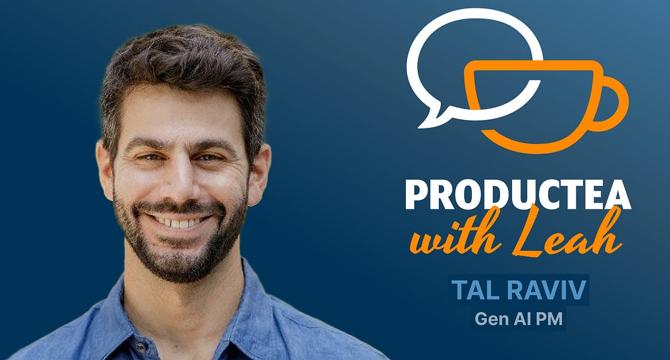
Image Credit: Leah’s ProducTea
95: Tal Raviv - AI for PMs: Stop Overthinking, Start Tinkering
- Tal Raviv shares practical tips for PMs to embrace AI without fear, advocating for starting small, experimenting often, and using AI as a thought partner.
- AI is seen as a tool that can enhance the job of PMs, not replace them.
- PMs are advised to start small, iterate, and experiment with AI tools like ChatGPT, Claude, and Whisper.
- AI can help in improving cross-functional alignment by surfacing insights from unstructured data.
- The future of PM work involves mastering AI tools like Notion AI and Slack AI that leverage unique company contexts.
- Tal emphasizes the importance of hands-on experimentation with AI tools to maintain product intuition and adapt to changing workflows.
- AI impacts PM workflows from discovery to go-to-market strategies, reshaping job applications and team structures.
- Using AI for user research can streamline tasks like summarizing transcripts and identifying key insights.
- PMs are encouraged to trust AI outputs by testing them with familiar data while also staying connected to raw data for sharper intuition.
- AI can facilitate cross-functional alignment by helping PMs spot conflicts between departments and surface valuable insights.
Read Full Article
15 Likes
Minis
73.1k
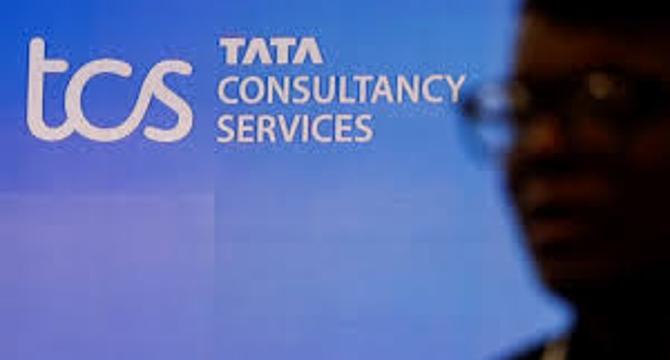
Image Credit: Minis
TCS to roll out 4-8% salary hikes in March; payouts to begin in April: Report
- Tata Consultancy Services (TCS) will roll out its annual salary hikes in March, with payouts starting in April.
- The expected increments range between 4-8%, following the company's quarterly variable pay (QVP) for the October-December period.
- TCS has linked salary hikes and variable payouts to employees' compliance with its return-to-office mandate announced in 2024.
- This comes amid a slowdown in salary hikes across the IT sector, which previously saw double-digit increases during the COVID-19 period. TCS recently reported an 11.95% year-on-year rise in net profit, reaching Rs 12,380 crore for the December quarter.
Read Full Article
93 Likes
The Beautiful Mess
49

Image Credit: The Beautiful Mess
TBM 341: 10 Tips for Turning Around a Platform Team
- When facing challenges in a platform team, focus on keeping things simple and communicating progress effectively.
- Avoid perpetuating negative cycles within the team and optimize for high-leverage work to avoid worsening the situation.
- Utilize enabling constraints to drive behavioral changes, encourage contributions from others, and track time and energy expenditures transparently.
- Facilitate alignment by bringing managers from your team and partner teams together, and work on small, meaningful milestones for the platform roadmap.
- Maintain team motivation by emphasizing progress in areas like self-service requests, team contributions, and focused work.
- Address the ongoing challenges systematically rather than seeking quick fixes or short-term wins that may lead to further setbacks.
Read Full Article
2 Likes
The Beautiful Mess
185

Image Credit: The Beautiful Mess
TBM 340: Path to $
- Teams vary in characteristics like proximity to customer impact, independence, and stability, influencing ROI discussions and funding allocation.
- Team 1 is exemplary, with clear benefits directly tying their work to revenue and outcomes, making ROI assessment straightforward.
- Team 2 faces challenges in illustrating benefits due to diverse tasks and lack of continuity, requiring detailed scrutiny for ROI estimation.
- Team 3 operates with focus in a specific domain, partnering effectively to build a solid business case despite hurdles in diverse partnerships.
- Team 4 optimizes customer journeys collectively with other teams, presenting difficulties in isolating individual impact for ROI assessment.
- Team 5 adopts a dynamic approach with temporary teams, focusing on growth without stringent ROI analysis, emphasizing optionality and teamwork.
- Team 6 follows a traditional project-based model, necessitating meticulous time tracking and impact estimation for funding decisions.
- Product-forward companies blend stable, independent teams like Team 1 and Team 3, limiting reliance on complex projects like Team 6.
- Balancing passion and discipline is crucial for startups evolving from a Team 5 structure to manage growth effectively.
- Patience and strategic development are key for teams like Team 3 to establish metrics linking efforts to customer and business value for sustained success.
- Effective team structuring helps mitigate dependencies and fosters boundary establishment, enhancing operational efficiency and collaboration.
Read Full Article
10 Likes
Minis
56.5k

Image Credit: Minis
5 things to remove from your resume in 2025
- Unnecessary personal details – Omit information like date of birth, marital status, religion, and full address. Include only your name, phone number, and email.
- Generic career objective – Replace vague objectives with a tailored summary that aligns your skills with the company’s goals.
- Irrelevant internships/jobs – Skip experiences unrelated to the role unless they showcase transferable skills.
- School-level achievements – Focus on college-level accomplishments, as high-school awards add little value.
- Soft skills without proof – Avoid listing skills without examples from projects, internships, or extracurricular activities.
Read Full Article
215 Likes
For uninterrupted reading, download the app